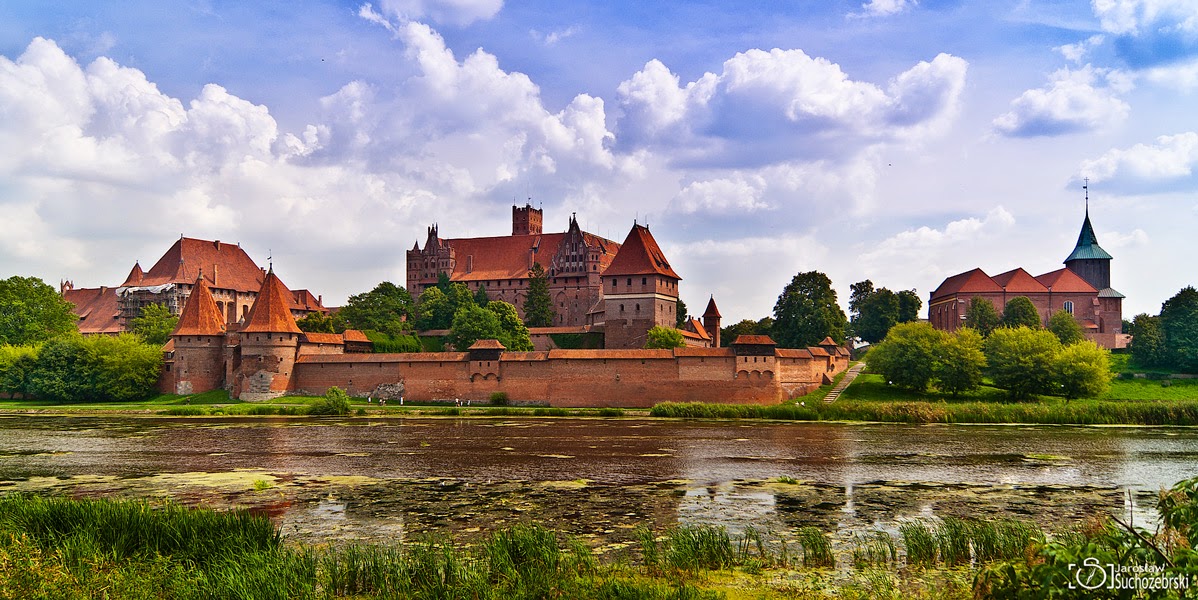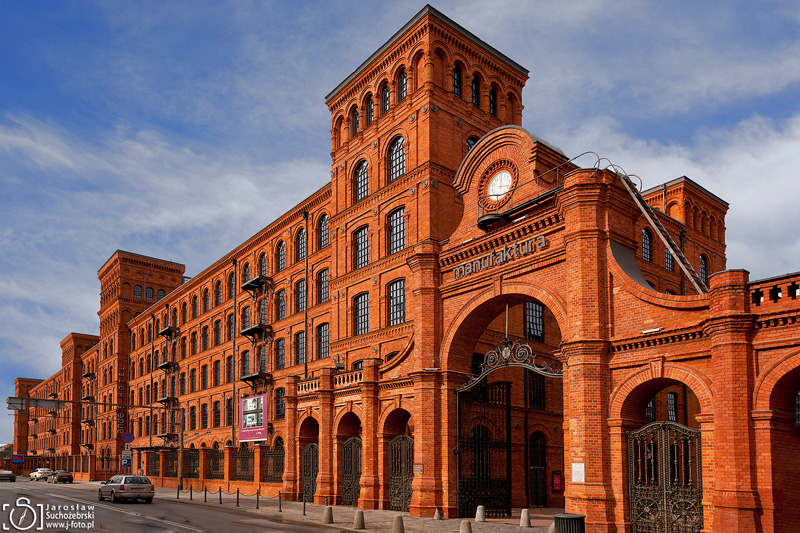Muskau Arch - UNESCO Global Geopark
The Muskau Arch is a transnational Geopark situated in the west of the Republic of Poland and in the east of the Federal Republic of Germany. The region lies in the triangle formed by the Federal State of Brandenburg, the Free State of Saxony in Germany and the Lubusz Voivodeship in Poland. The Muskau Arch is one of the most scenic push end moraines in Middle Europe. The geological structure of moraine and its immediate hinterland constitute the territory of the Geopark.
The river Neisse cuts through the Arch and forms the border between Germany and Poland. Flowing from south to north the Lusatian Neisse makes a remarkably deep incision in the plain, its terraces defining the area of the Arch.
The river Neisse cuts through the Arch and forms the border between Germany and Poland. Flowing from south to north the Lusatian Neisse makes a remarkably deep incision in the plain, its terraces defining the area of the Arch.
The name Muskau Arch (German: Muskauer Faltenbogen, Polish: Łuk Mużakowa) was probably coined by the Prussians during their geological mapping. The name origin is from the Muskau (Upper Sorbian: Mužakow, Polish: Mużaków), a town in the historic Upper Lusatia region. Today Bad Muskau is a spa town in Germany at the border with Poland.
Geological origin of the Muskau Arch
Muskau Arch is a horseshoe-shaped lobe extending approx. 22 km from west to east and approx. 20 km from north to south. It was formed some 340,000 years ago as the "Muskauer glacier" advanced from the thick inland ice sheet which covered half of Europe at that time. The load from the ice cover caused subsoil compaction down to a depth of about 300 metres while deforming the horizontal successions of sand, gravel, clay and lignite beds. The unconsolidated rock masses in front of the glacier piled up to form a terminal moraine of some 150 m above today's ground level. The inland ice of the more recent glacial periods flattened the moraine down to today's level, but not entirely.
The Muskau Arch has remained an ever-changing landscape until this very day. There are the interesting geological formations, so-called giesers, which are oblong valleys in areas where lignite beds come to the surface. The organic material is oxidised by atmospheric air, which causes ground shrinkage and subsidence. As time passes, the valleys cut deeper and deeper into the ground.
Mining and industry activity in the Muskau Arch
The natural resources of the region were already used by people in the Middle Ages. The factories were built to melt and transform local glass sands into high-quality goods for daily use. The clays were used to make bricks and roof tiles, ceramic containers for the chemical industry, and pottery for daily use. Another important business was the smelting and moulding of bog iron ore. Also, alum earths and alum clays were extracted to cover the needs of the chemical industry.
In the 19th-20th centuries, there was also brown coal mining in the area of the moraine. The brown coal (lignite) was extracted both in deep mines and open pits. In the 40s of 19th century, there were about 60 mines, each having several extraction pits. The open pits left about 400 lakes spread all over the moraine region over a surface of some 280 square kilometres. It was not until the middle of the 20th century, when the more efficient large-scale lignite surface mining commenced, that the Muskau Arch region lost its significance as a raw material supplier.
Geotourism in the Muskau Arch area
Today, the Muskau Arch is full of impressive relics of the manifold industrial operations are omnipresent. There is a picturesque cultural and post-mining landscape full of many and varied post-mining lakes, and line once marked by the natural "gieser" valleys. There is also a natural area of forests exhibiting significant ecological diversity. This beautiful recreational landscape is crossed by a network of theme-based hiking and biking trails.
The best way to get to know the past of the region is to walk the geoturistic path "Former Mine Babina" in the Polish part of Geopark. The brown-coal mine Babina was created in 1921 as one of larger mines within the Muskau Arch area. In 1937 the coal production reached 225.5 thousand tonnes. After the WW2 both the underground and open-pit workings were developed. In 1973, following the deteriorating mining conditions and the related increase in costs, the mine was closed down. In order to present natural, environmental processes taking place in areas that were strongly altered by mining activities, a decision was taken to open a geological-tourist trail near one of the largest pits of the Babina mine. Along with a 4-kilometer-long path, there are several geological sites located around 600 m from one another which include a post-mining lakes with acid water characterised by changing colours and numerous forms of deep erosion by rainwater developed on the sediments of mine heaps.
There are also a lot of the thematic tours available in the German part of Geopark: the Historical Mining Tour, the Glass Tour, Jerischke End Moraine/Neisse Valley Tour and the Hermannsdorf Cycle Path.
There are also beautiful parks of cultural and historical significance in the area of Geopark such as the transnational Fürst-Pückler-Park located in Bad Muskau (Germany) and Łęknica (Poland), declared a UNESCO World Heritage Site in 2004 (click learn more at: Muskau Park - World Heritage Site) and the Kromlau Rhododendron Park in Germany.
All pictures in the article were taken in the area of the former Mine Babina near Łęknica, in the Polish part of the Muskau Arch Geopark.
* * *
This post is linked at:
Through My Lens - Our Word Tuesday - Travel Tuesday - Image-In-Ing - Wordless Wednesday - Wednesday Around The Word - Outdoor Wednesday - Travel Photo Thursday - Skywatch Friday - Weekend Travel Inspiration - Seasons




































Great post! Please visit my page: http://perlensblog.blogspot.com/
ReplyDeleteSuper zdjęcia :)
ReplyDeleteAnother great post--- places I would never know about. Thanks.
ReplyDeleteSoooo pretty what a beautiful place.
ReplyDeleteCudowne miejsce:)
ReplyDeleteWhat a beautiful country you live in! Every time about Poland I feel dumb because I've never been there and I don't even know the names of these places. You took great photos at Muskau Arch. It's a beautiful park.
ReplyDeleteSo gorgeous!
ReplyDeleteAmazing place. Nice to read.
ReplyDeleteLoved all pics, Awesome.
Your part of the world is just gorgeous. Such beauty shared in your fotos today! Thank you so much for taking the time to link up with FFF......HOPE you have an awesomely blessed weekend!
ReplyDeleteBeautiful photographs - the sky is just so blue! I'd never heard of this place but turning the mine pits into lakes is a brilliant idea. I imagine the area now is much more beautiful than when they were still being mined. #Wkendtravelinspiration
ReplyDeleteThese pictures are breath-taking! I cannot get enough of this beauty!
ReplyDeleteI've heard that Poland is beautiful but I've not seen many photos or done much research into this. What a beautiful place and beautiful photos!
ReplyDeleteThis is a very interesting area. I would find the geoturistic path educational. The changes to the area from all the mining and industry are significant.
ReplyDeleteA beautiful area that you captured so well
ReplyDeleteWhat a beautiful and fascinating park. I'm interested in geology so this is right up my alley. Thanks for linking up this week with #wkendtravelinspiration!
ReplyDeleteOoh what a lovely park and how fascinating to learn about the giesers! Will have to keep this in mind for whenever we head north one day! Thanks for linking up with #TheWeeklyPostcard! (www.caliglobetrotter.com)
ReplyDeleteWow! This is a gorgeous place! That lake is so crystalline and the rock (or earth) formations look like the badlands we have here in the States. Would like to concentrate more on the natural side of Europe. #TheWeeklyPostcard
ReplyDeleteThis area is so beautiful with the many shades of the trees contrasted against the ground and the blue water. I would have never suspected that so much mining went on in this area as I usually imagine that as a more barren landscape. Lovely photos. #WkendTravelInspiration
ReplyDeleteWhat a fascinating area! I would be snapping shots of every little detail, too!
ReplyDeleteYour posts make me feel sorry I'm so far from Europe. There are so many great places I'd love to visit there. At any rate, I'm definitely adding Poland to my bucket list and that's in part due to your beautiful photographs. #TheWeeklyPostcard
ReplyDeleteWhat a beautiful and slightly strage place!
ReplyDeleteWow! That looks like a beautiful hike!
ReplyDeleteWonderful sights. Thanks so much for linking in with "Through my Lens"
ReplyDeleteMersad
Mersad Donko Photography
Magnifiche immagini !!!!
ReplyDeleteOh my goodness your photos are stunning! Found you through Monday Escapes and I now want to escape :)
ReplyDeleteSo beautiful! It looks like you were the only one there!
ReplyDeleteLove learning about places I had never heard of! So interesting and it looks like a beautiful area! #mondayescapes
ReplyDeleteAnother fascinating destination in Poland for me to visit next time! I honestly hadn't expected to see a landscape like this in Poland, so thanks for sharing! #wkendtravelinspiration
ReplyDeletesuch a lovely lovely spot...
ReplyDeleteThank you for this very interesting post. Love the two first nature shots - beautiful! Brandenburg always peeked my interest. Adding to that, had no idea mining took place in Poland! Many thanks for sharing these, as well as the lovely birches with All Seasons! Have a beautiful week:)
ReplyDeleteWhat a beautiful place with such interesting geology. Europe's different landscapes are so fascinating. Thanks for linking up with #MondayEscapes
ReplyDeleteYou always post such beautiful photos that make me want to get up and go somewhere! Muskau Arch is truly beautiful!
ReplyDeleteWhat an amazing landscape. Your photos of it are gorgeous, and the information is interesting.
ReplyDeleteWow - gorgeous and pristine beauty!
ReplyDeleteAbsolutely gorgeous blue water and area. Thanks for sharing your beautiful country. :)
ReplyDeletePeabea@Peabea Scribbles
another exceptional post with beautiful photos.
ReplyDeleteWow the water is such a glorious blue colour
ReplyDeleteMollyx
What a stunning place, with that crystal blue water. Beautiful!
ReplyDelete